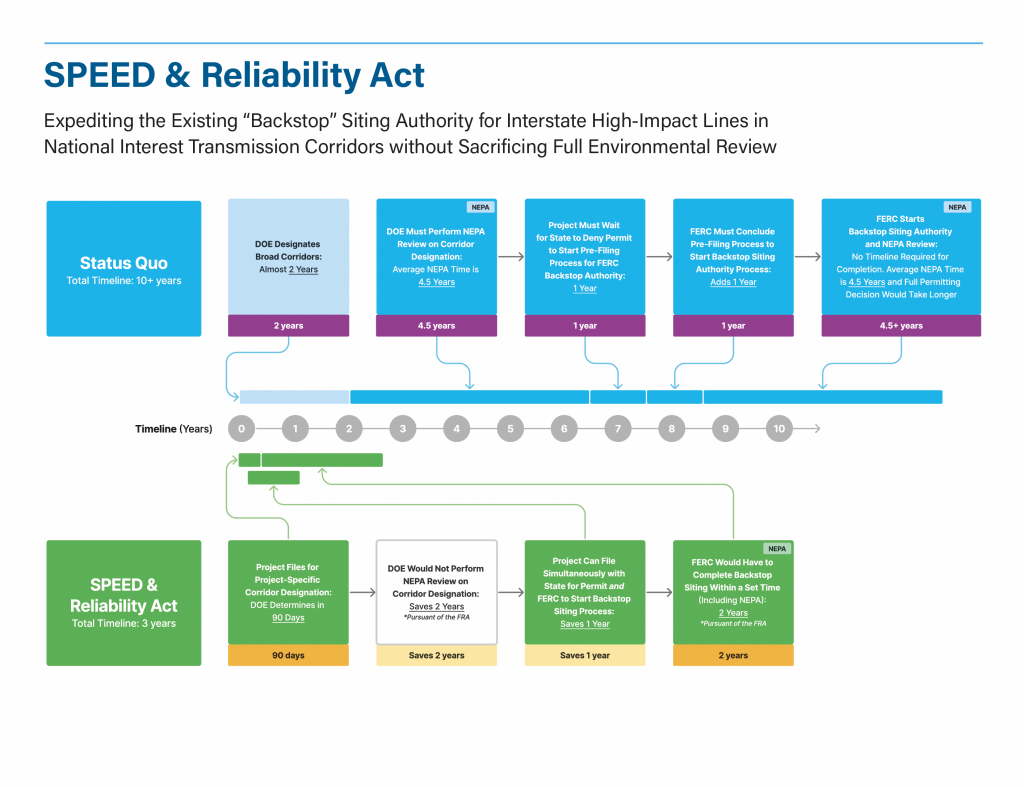SPEED and Reliability Act would cut red tape, end duplicative reviews
WASHINGTON – Today, U.S. Senator John Hickenlooper and Representative Scott Peters introduced the Streamlining Powerlines Essential to Electric Demand (SPEED) and Reliability Act, a bill to significantly expedite the siting and permitting of interregional transmission lines. Currently, both the Department of Energy (DOE) and Federal Energy Regulatory Commission (FERC) must conduct environmental reviews for the same proposed transmission line. The Speed and Reliability Act instead requires a single environmental review by FERC and allows state and federal reviews to happen simultaneously, reducing review timelines by several years.
“Good energy projects have been mired in government red tape, slowing our clean energy transition and the lower costs and new jobs it will bring,” said Sen. Hickenlooper. “As our Bipartisan Infrastructure Law and Inflation Reduction Act work in tandem to pull us into the future, our legislation will help ensure our outdated permitting processes won’t hold us back.”
“If we want to avoid a climate catastrophe, we cannot wait a decade plus for individual transmission lines to be approved,” said Rep. Peters. “Our commonsense proposal builds on our past work to dramatically speed up how we build transmission lines to ensure that we can deliver energy to the areas that need it the most. This will lower costs for consumers, improve reliability, and help secure America’s energy independence.”
The SPEED and Reliability Act speeds the permitting processes for national interest transmission lines by at least five years without sacrificing environmental integrity or community input by:
- Allowing individual transmission lines to be deemed as “national interest high-impact transmission facilities”, rather than requiring DOE to identify broad corridors that developers might want to build lines in.
- Requiring FERC to conduct a single environmental review for national interest high-impact transmission facilities, rather than requiring duplicative reviews by FERC and DOE.
- Denoting that qualifying transmission lines must be at least 345 kilovolts, add or increase transmission capacity by at least 750 megawatts, and cross at least two states–or one state and the Outer Continental Shelf–limiting eligibility to the most significant transmission lines.
- Imposing firm timelines for DOE’s designation process and FERC’s subsequent permitting and environmental review to ensure the entire federal permitting process is complete within 2 years and 3 months.
Current law and court decisions require both DOE, which heads up the corridor designation process, and FERC, in charge of backstop siting authority, to evaluate environmental impacts from qualifying national interest transmission lines. However, under an applicant-driven, route-specific process, these reviews would be identical because the proposed location of the corridor is the same as the footprint of the transmission line itself, rather than the larger geographic footprint of a corridor.
“ACP has long called for a pragmatic, bipartisan approach to improving the transmission permitting process. The SPEED and Reliability Act creates a far more efficient and predictable process for building critical electric system infrastructure. Powering America’s future will require a larger, stronger, and more resilient electrical grid. The reforms in this bill are essential to build an electric power system that reflects our local and national interests,” said Jason Grumet, CEO of American Clean Power (ACP).

Source: American Clean Power (ACP)
Full text of the bill is available here. One-pager of the bill is available here.
###
